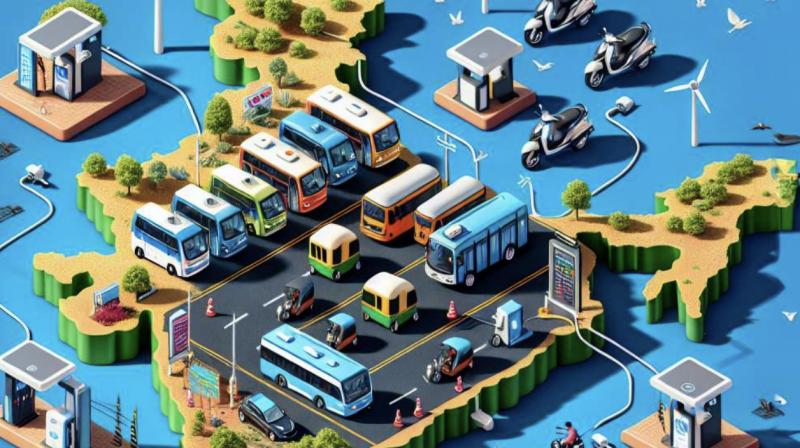Rediffusion's Bharat Lab has rolled out a report through which it aims to understand the country's preferences and perceptions towards electric vehicles (EV).
India's top EV sales in 2023 exceeded 15 lakhs (according to CareEdge). This grew from a little over 10 lakh in 2022, translating to a 50% growth.
The overall contribution of EVs in 2023 grew to 6.38% from 1.75% in 2021. The growth comes on the back of environmental concerns (around fossil fuels), rising fuel costs, and advancements in EV technology.
In 2023, electric two-wheelers dominated the EV market, comprising nearly 56% (8,57,165) of total sales. Ola Electric led the category with 2,66,869 units followed by TVS Motor Company (2,66,869) and Ather Energy (1,04,514 units).
During the year, electric three-wheeler sales surged by 66% to exceed 5,81,000 units. This category constitutes 38% of India's EV market.
In the four-wheeler category, a combined 72,623 units were sold. The category contributed 5% of the total sales in the category according to the report. Tata Motors was the major contributor to the sales with 51,189 units, followed by MG Motors (9,263), Mahindra (4,140), BYD (1,774) and Hyundai (1,577).
The rise in electric four-wheeler sales reflects growing consumer confidence in EV technology, supported by government incentives and a wider range of models.
Uttar Pradesh had the most electric vehicles registered in 2023. Maharashtra was second followed by Karnataka. In UP, e-rickshaws dominated with 81.62% of the total units sold. The total tally of electric vehicles sold in Uttar Pradesh in 2023 reached 2,77,837 units. Electric three-wheelers contributed the most sales with 2,32,601 units, followed by 40,268 units of E-2 wheelers, 4,846 units of E-4 wheelers, and 50 units of electric buses.
According to the data from the Ministry of Power, there are 12,146 operational public EV charging stations throughout the country. Maharashtra and Delhi lead the table with 3079 and 1886 stations respectively, while Uttar Pradesh has 583 charging stations.
Future growth
The NITI Aayog predicts that between 30%-70% of automobiles, 40% of buses, and 80% of two and three-wheelers would be electric by 2030. The government also believes that India should get 10 million direct jobs and 50 million indirect jobs by 2030 courtesy the EV boom.













